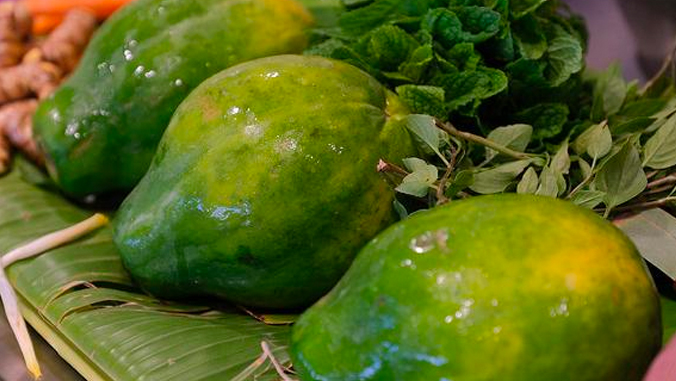
Data collected by the University of Hawaiʻi at Mānoa and MAʻO Organic Farms, to capture the relationship between ʻāina (land/environment) and ola (health/life) from individuals living in Waiʻanae, show promise that getting a community involved in preventing type 2 diabetes can reduce their disease risk.
While scientists monitored health data from 392 people across Oʻahu, the majority lived in Waiʻanae, including 259 individuals of Native Hawaiian or Pacific Island ancestry—those at highest risk in Hawaiʻi for type 2 diabetes.
The UH study partnered with MAʻO Organic Farms in Waiʻanae, which provides educational and employment opportunities to young people in the area. These “interns” work the land and also receive tuition waivers. It is a program that the researchers and the community-based organization suspected would improve health among the interns, because they are active, working the land in ways their ancestors did, consuming healthier food—farm fresh—all while getting an education.
Many of the interns agreed to take part in the study, which measured body mass index, blood pressure, mental health, gut microbiome composition, diet, social economics, health behaviors and social network influences. It is among the interns that the preliminary results showed a 60 percent decline in risk for type 2 diabetes.
The study leaders are Alika Maunakea, a Waiʻanae-born associate professor at the John A. Burns School of Medicine (JABSOM), an expert in epigenetics (the molecular interaction between the environment and genes, and how changes in this interaction are involved in diseases that are disproportionately prevalent in Native Hawaiian and Pacific Island populations), and Ruben Juarez, an associate professor in the Department of Economics and UH Economic Research Organization. Juarez is a mathematical economist researcher with expertise in social networks and behavior.
“Studies like ours allow grassroot community-based organizations that do not explicitly target health, but definitely impact it, to be valuable partners in the healthcare system,” said Maunakea. “That enables sustainable health care by shifting the focus from treatment to prevention-oriented approaches in the real-world.”
Read more on the JABSOM website.
—By Tina Shelton

